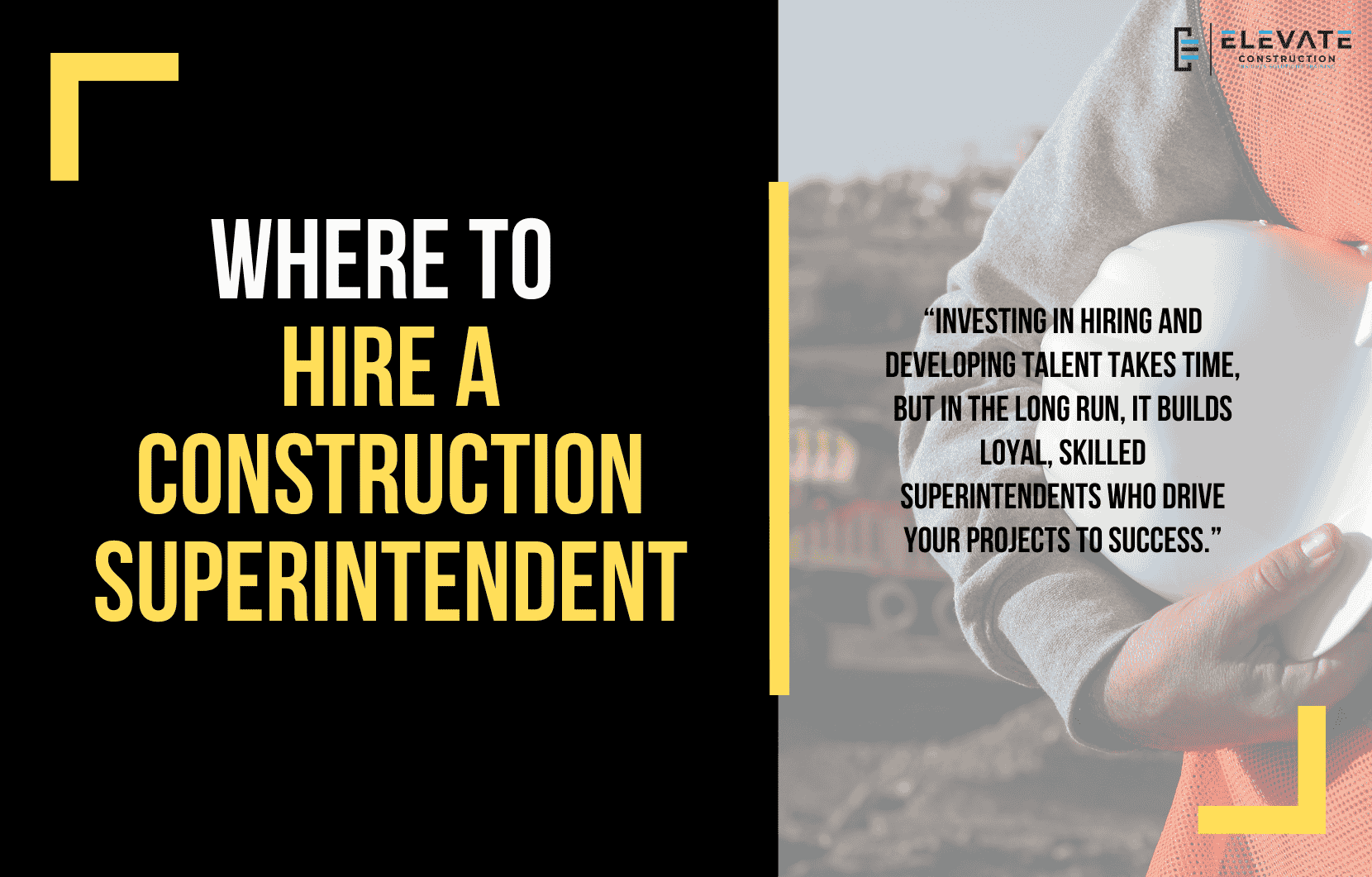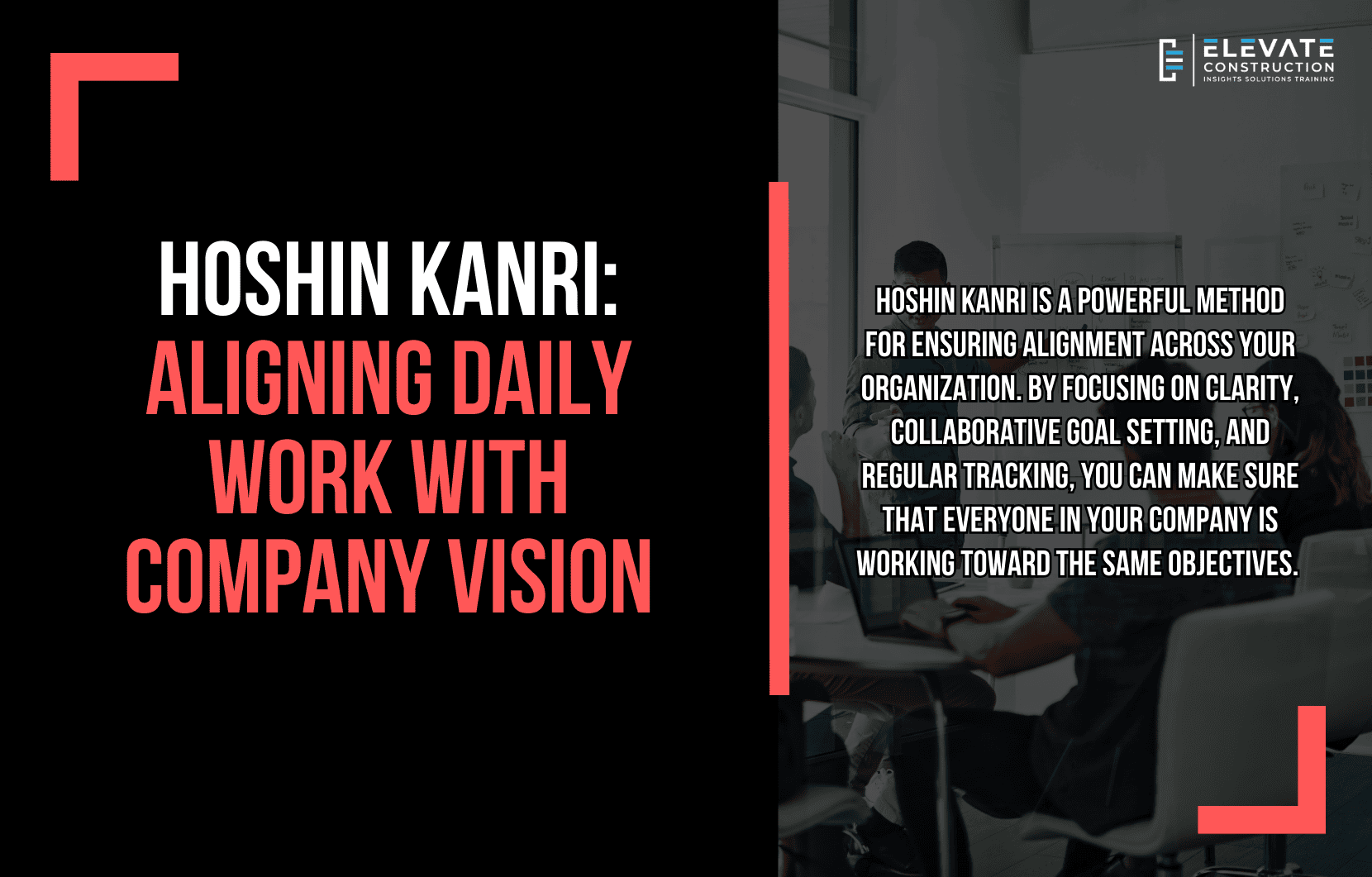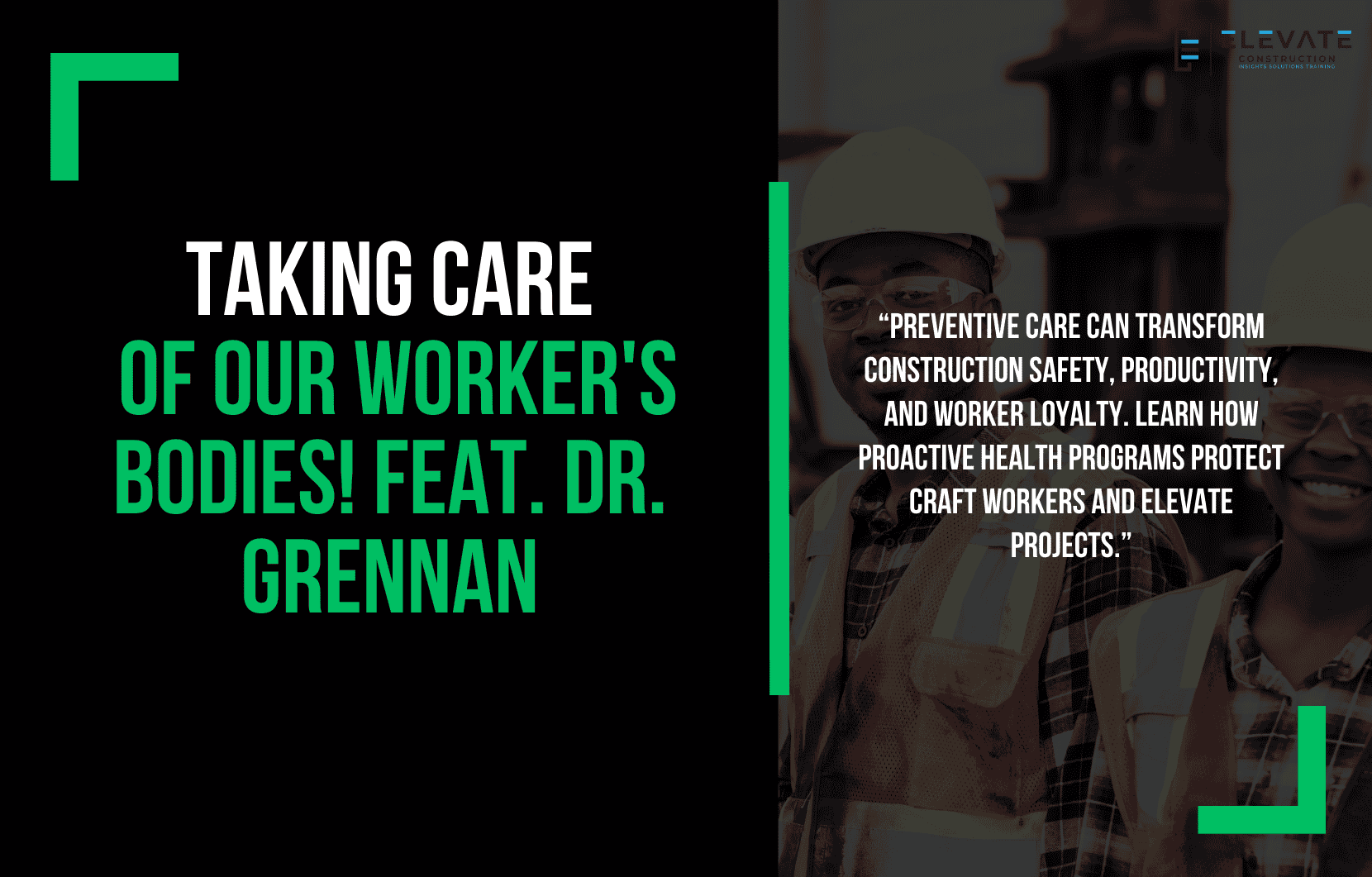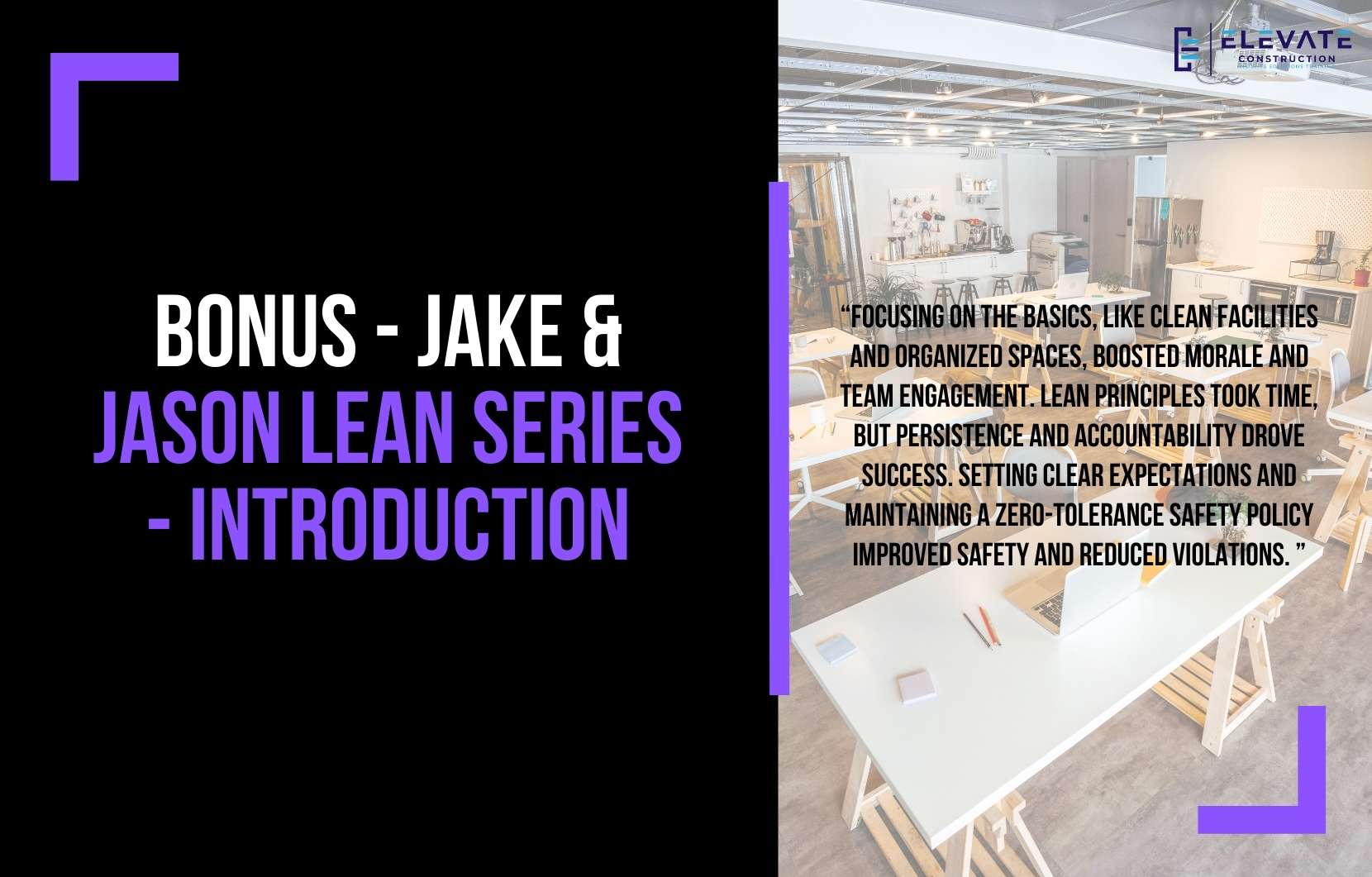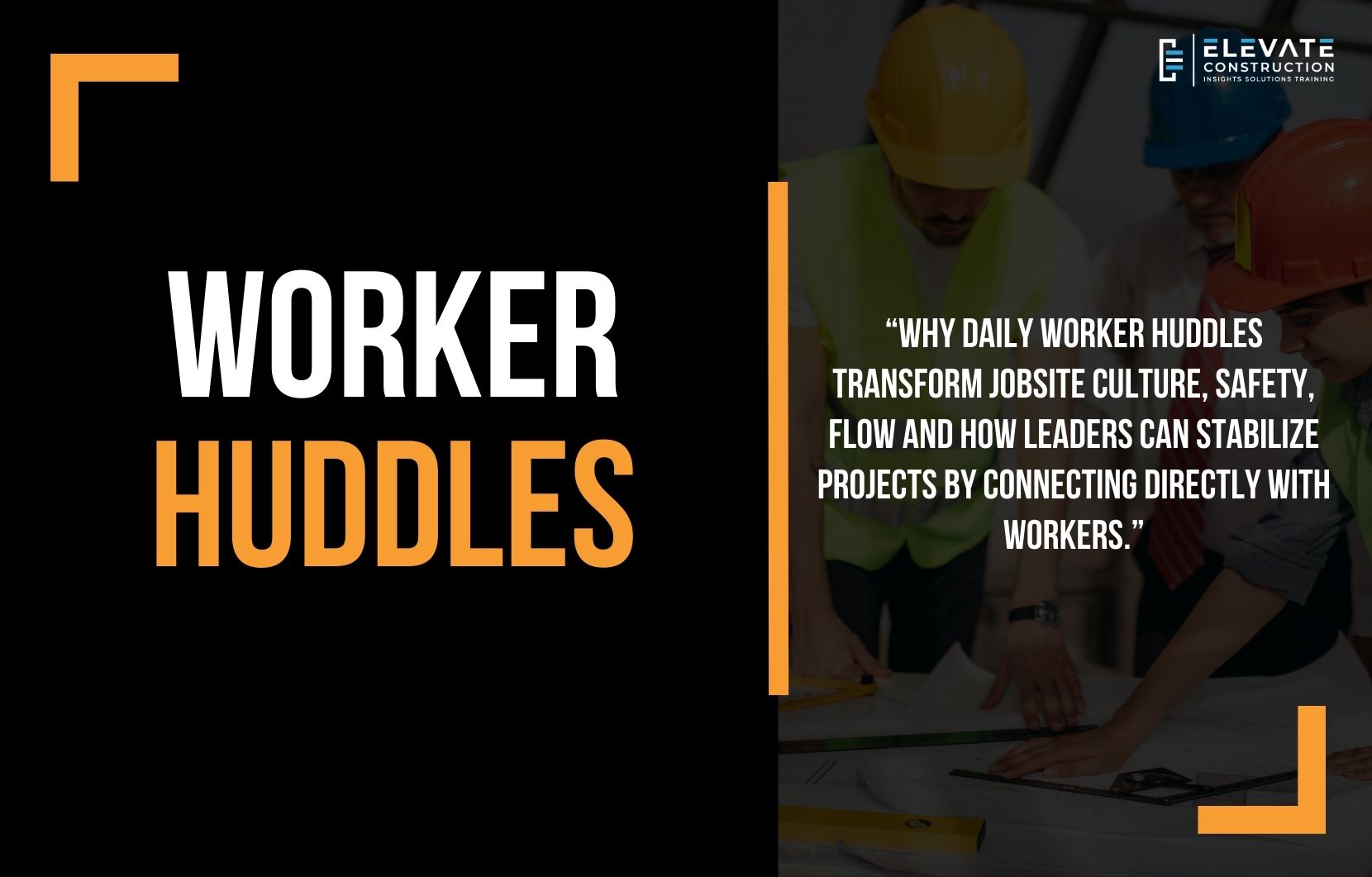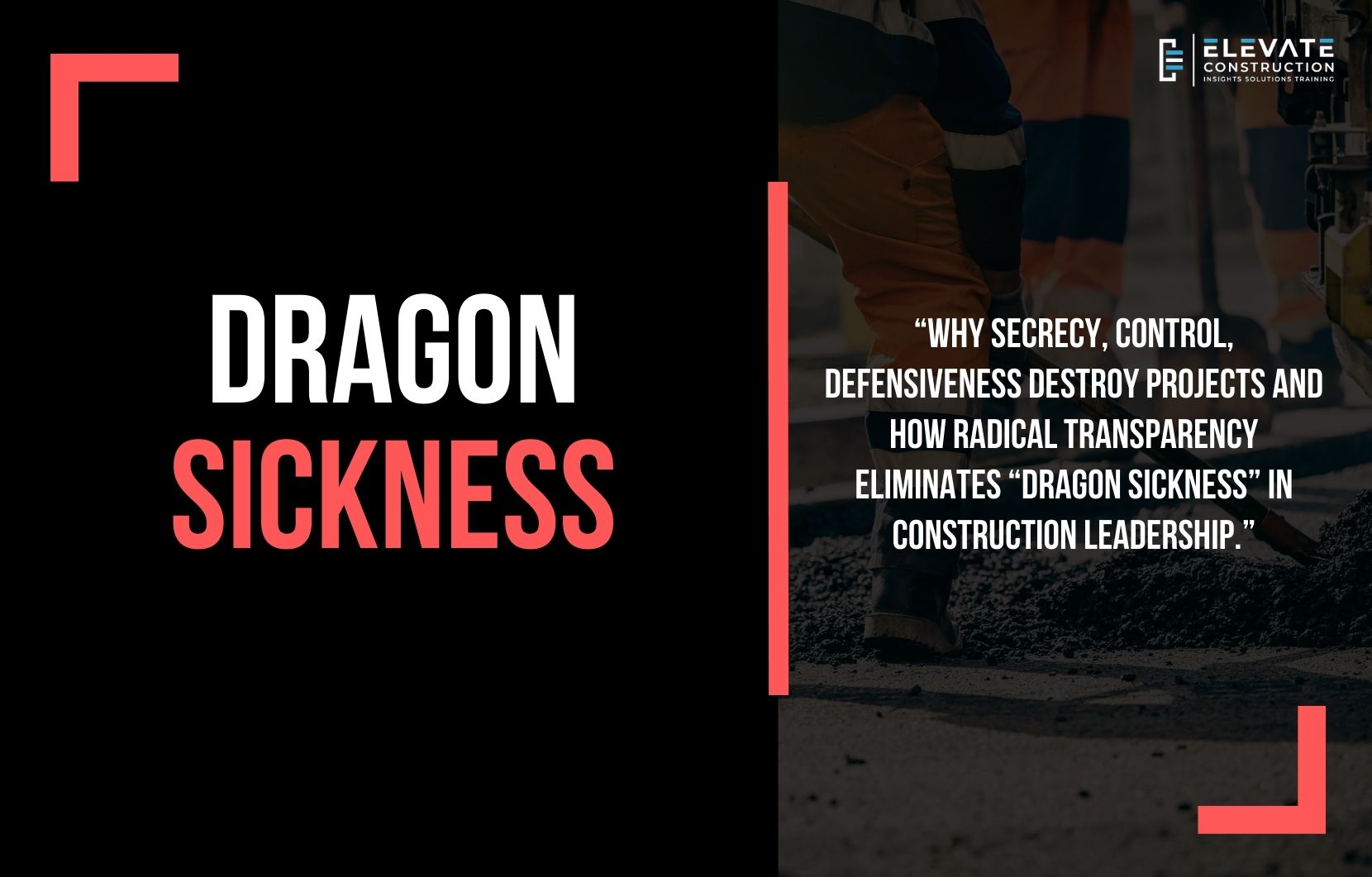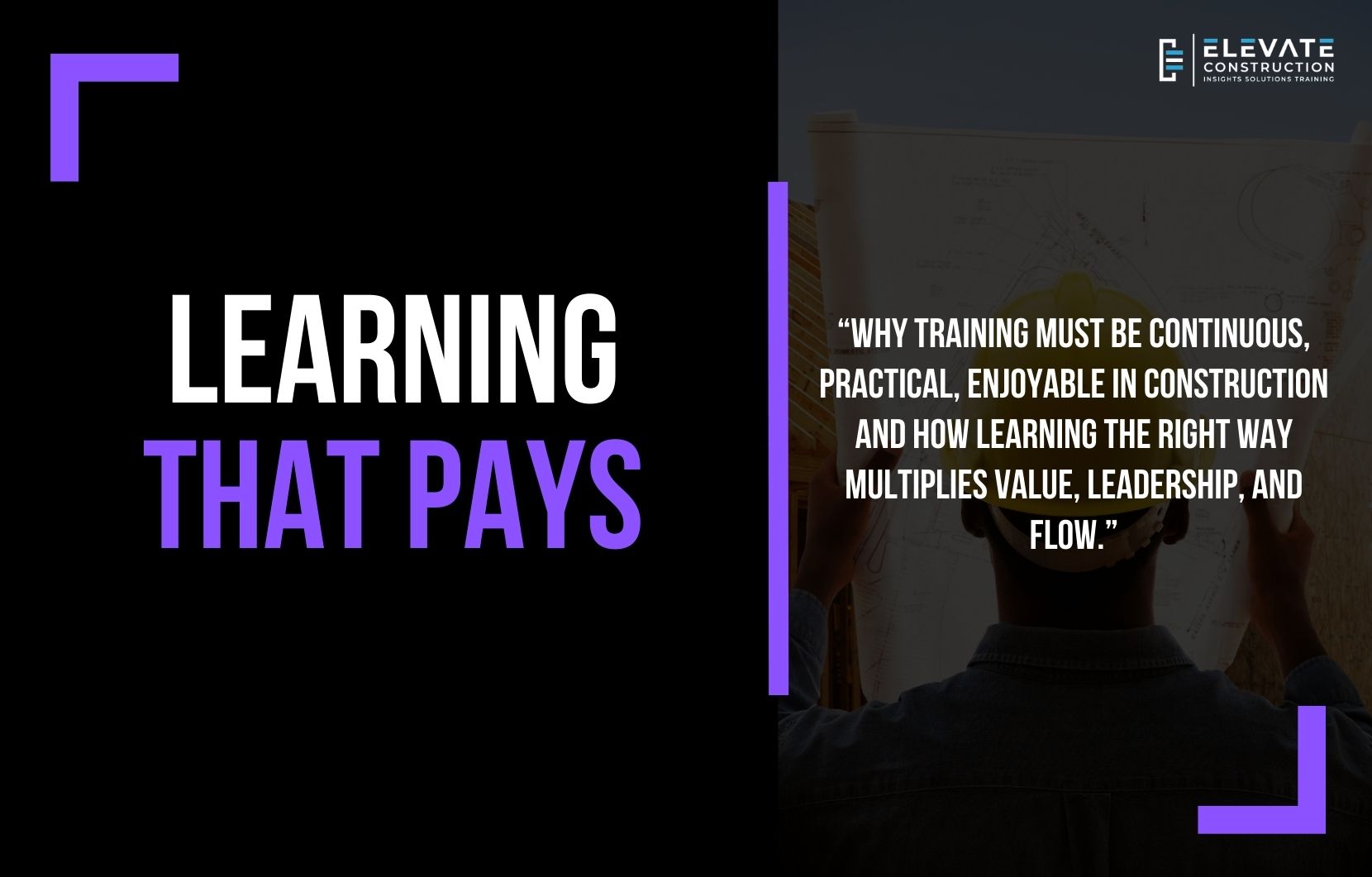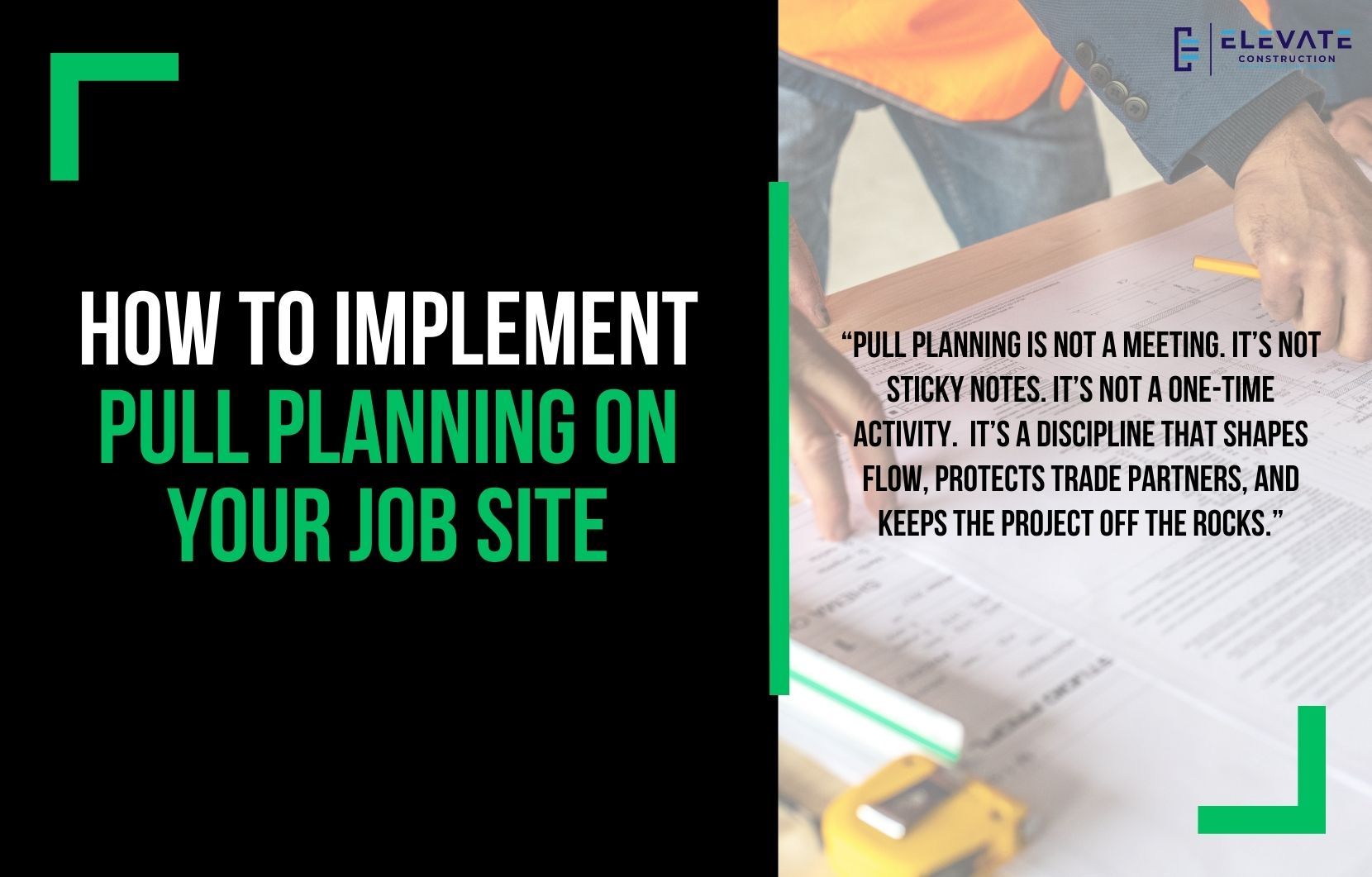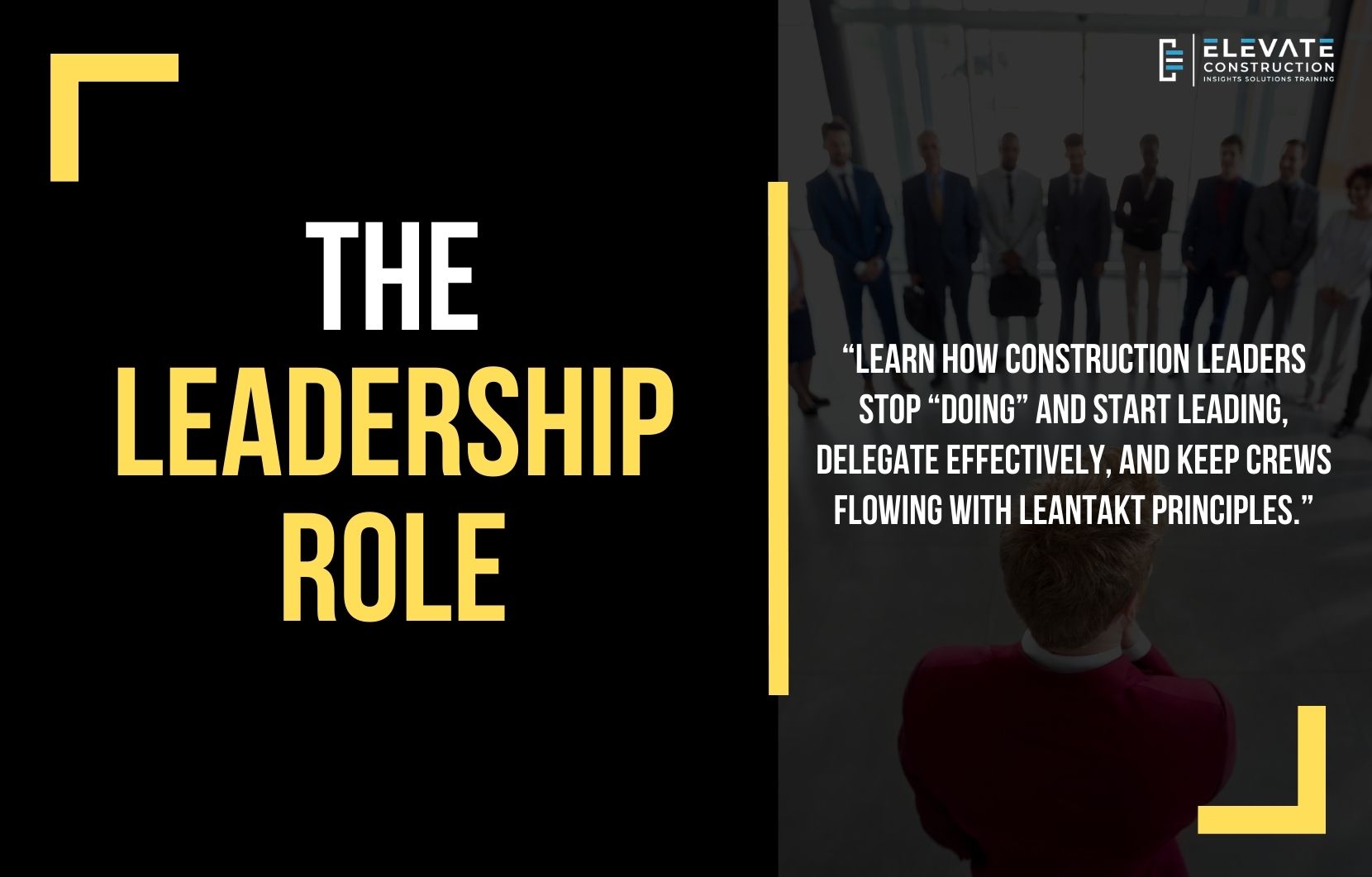Stand Where You Are and Lift Where You Stand
There’s a moment on every project where you realize you’re not tired because the work is hard. You’re tired because you’re carrying the wrong work. You’re tired because you’re acting like the hero doer when your team needs a leader. You’re tired because you can’t leave the site without the place wobbling, and deep down you know what that means. It means you’ve become the bottleneck. That’s not an insult. That’s a wake-up call. And if you’re feeling it right now, this message is for you.
In construction, we reward the person who “handles it.” We praise the one who is always running, always responding, always in the weeds, always doing. That culture feels honorable, but it’s also one of the fastest ways to derail a project and burn out a leader. When your days are full of emergency errands, last-minute fixes, and constant firefighting, you might look busy, but you are not necessarily effective. And the problem is not your work ethic. The problem is your role clarity.
I want to start with a simple phrase that has guided me more times than I can count: stand where you are and lift where you stand. That means do the job that belongs to your seat. Do it with excellence. Do it with discipline. Do it with respect for the people around you. And stop drifting into everyone else’s work because it feels familiar or because it makes you feel needed.
The Pain: When “Hard Working” Turns Into “Always Behind”
If you have trouble getting out of the weeds, you are not alone. I’ve seen it with foremen, field engineers, superintendents, project managers, and directors. People who are talented and hungry, who want to do a good job, end up trapped in a pattern where they can’t get home on time, can’t take a day off, and can’t stop thinking about the job because the job depends on them for everything.
That pain shows up in obvious ways. The schedule gets shaky. The crew waits for information. Materials are missing at the worst time. Quality issues stack up behind the work. Safety starts to feel reactive instead of planned. And then you feel the pressure, so you push harder, you step in more, you carry more, and you become even more central to the project. It becomes a cycle that looks like commitment but functions like a slow-motion failure.
I want to say this clearly: if you are constantly needed, it doesn’t always mean you are a great leader. Sometimes it means the system is weak. Sometimes it means you haven’t built capability around you. Sometimes it means you are doing work that belongs in another role, and the people who should be doing it are either waiting on you or never learning.
The Failure Pattern: The Leader Who Escapes Into Doing
One of the most common signs of a project in trouble is when people are out of role. When someone is out of role, they are not watching what they should be watching. They are not protecting the things that must be protected. And someone else on the team assumes those responsibilities are handled, so gaps form. That’s where costly mistakes come from. That’s where variation comes from. That’s where production gets derailed.
The tricky part is that being out of role often looks like “helping.” It looks like humility. It looks like leadership. But there’s a difference between being willing to do anything and being unable to stay in your station. Humility is a virtue. Escaping your role is not.
I’ve learned over the years that some of the biggest blocks to leadership are emotional, not technical. People think they need to be the hardest worker to deserve the role. People want credit. People want to please others. People play savior because holding others accountable feels uncomfortable. And when leadership gets uncomfortable, the easiest escape is to go do physical work or run an errand, because doing feels productive and conflict feels risky.
If you want to grow as a leader, you have to recognize that pattern in yourself and interrupt it.
A Field Story That Changed My Thinking Forever
When I was a young field engineer in Austin, Texas, we were building the Whole Foods World Headquarters. We were down in a massive excavation, hot, humid, and hard to manage. I was new, stretched, and trying to figure out how to be useful. On that project, I watched two rebar foremen. One of them was always working with his crew, elbows up, head down, setting the example. The other one seemed to spend his whole day walking around with information, bringing material, lining people out, and checking quality.
If you had asked me back then which foreman was better, I would have guessed the one working with his guys. That’s what we’re taught. We’re taught that leadership looks like doing the work alongside the team. But then I noticed something. The crew with the “working foreman” kept stalling between tasks. They didn’t know what was next. They waited. They got the next instruction late. And nobody was really checking the work behind them, so mistakes slipped through.
The other foreman’s crew was different. They flowed. They finished one task and moved right into the next. They had what they needed. They knew where they were headed. And their quality was consistently better.
When I asked that foreman what was going on, he said something that stuck with me for life. He basically told me, “My job is to bring the materials and information, and to check quality. If I’m working with my guys all day, nobody is preparing the next step, and nobody is controlling the work.” That was the first time I truly understood that the leader’s role is to plan and prepare, then provide, then verify.
That moment flipped a switch for me. It taught me that looking busy is not the same as leading. It taught me that a stable worker environment is not an accident. It is created. And it taught me that the highest form of respect for your people is to remove the friction from their day so they can build.
The Emotional Insight: Your Team Doesn’t Need Another Doer
Here’s the truth that a lot of us have to face. We like doing because it feels safe. Doing gives immediate feedback. Doing feels measurable. Doing lets you avoid hard conversations. Doing lets you avoid coaching. Doing lets you avoid accountability. Doing lets you avoid the discomfort of leading.
But your crew does not need you to be the best worker on the site. They need you to be the leader who keeps them away from chaos. They need you to create stability. They need you to make tomorrow make sense. They need you to make sure the materials show up, the information is clear, the plan is communicated, and the quality is verified.
That’s why “stand where you are and lift where you stand” matters so much. It isn’t about rank. It’s about responsibility. When you drift out of your role, you leave your station unattended, and something always hits the iceberg.
Leadership Framework: Stay at the Helm, Not Below Deck
I like using a ship analogy because it’s so obvious it almost feels unfair. If you’re steering a ship, would your people rather you be down below shoveling coal and sweeping the decks, or would they rather you be at the helm watching for danger and keeping the ship safe? Most of us answer that instantly. We want the leader at the helm.
On a project, the helm is your role. For a foreman, the helm is preparing the next task, ensuring your crew has what they need, lining out the plan, checking quality, and protecting safety. For a field engineer, the helm is controlling layout, lift drawings, information flow, and quality checks. For a superintendent, the helm is the schedule, coordination, logistics, constraints removal, communication systems, and crew flow. For a project manager, the helm is risk, financial health, commitments, and supporting the team so field production can win.
When leaders abandon the helm, they don’t just lose effectiveness. They create danger.
This is where Lean thinking becomes real. Lean isn’t a slogan. Lean is respect for people, stable environments, and continuous improvement. If the leader isn’t creating stability, the workers pay the price. They wait. They wander. They redo. They rush. They get hurt. They go home exhausted, and they start to believe that chaos is normal. That’s not a construction problem. That’s a leadership problem.
Practical Guidance: What Effective Leaders Actually Do All Day
If you want to transition from doing to leading, you need to stop measuring your value by motion. Motion is not the goal. Flow is the goal. Stability is the goal. Predictability is the goal. Respect is the goal. And that requires a different set of daily behaviors.
A leader spends most of their time preparing and providing. That means they are constantly creating clarity for the people who build. They are not hiding in the office, and they are not pretending leadership is beneath them. They are present, intentional, and focused on the work that multiplies others.
There are a few habits I want you to seriously consider, not as a checklist, but as a new mindset. First, communicate more than you think is necessary. Introverts and extroverts both have the ability to communicate. The difference is where you get your energy, not whether you can lead. Your crew should never have to guess what winning looks like today. They should hear it, see it, and feel it through your presence.
Second, delegate aggressively and intentionally. Humility means you are willing to do anything. Leadership means you know when not to. If it can be delegated and standardized, delegate it. Your default question should be, “Do I have to do this?” If the answer is no, it should be assigned, trained, and tracked so it gets done without stealing your capacity.
Third, spend your time with your best people. This sounds backward to a lot of leaders because we are taught to pour all our time into the squeaky wheel. But your best people are multipliers. When you coach them, they coach others. When you align them, they align the crew. When you invest in them, the whole system improves.
Here are two quick examples that fit naturally in the field and do not require a fancy program to start:
- If you take 20 minutes every day to coach your best foreman or lead, you will see that influence spread into crew behaviors, safety habits, and production discipline within weeks.
- If you delegate “runner” tasks to a designated support person with a clear material list system, your leadership capacity returns immediately, and the project becomes less reactive.
Fourth, follow the Pareto principle. In every role, there are a few actions that drive most of the results. In LeanTakt terms, you protect the system, not the noise. If you spend your day chasing low-impact tasks, you will feel busy and still lose flow. If you spend your day protecting the critical few, the project stabilizes.
The Red Flag You Can’t Ignore: Always at the Store
I’m going to give you something that I consider gold because it’s so consistently true it almost hurts. If you have a foreman or superintendent who is constantly at the store, constantly running errands, constantly away from the site doing “emergency” trips, they are usually escaping their real duty. They may not admit it. They may not even realize it. But it is often a sign they are uncomfortable with leadership, uncomfortable with conflict, or unsure how to prepare work.
Foremen do not belong leaving the job site to run errands. Superintendents under very few circumstances should be going to Home Depot. You can delegate retrieval. You can create lists. You can build a material management system. Your job is to prepare the work, not abandon the helm.
When you stay on site and stay in role, you can see what’s coming. You can remove roadblocks before they hit the crew. You can coordinate commitments. You can stabilize. And when you do that, your team stops depending on your heroics and starts depending on the system.
Where Elevate Construction Fits: Stabilize the Team, Then the Project
This is exactly why we teach the way we teach at Elevate Construction. We are not trying to create leaders who look important. We are trying to create leaders who create stability, dignity, and flow. We want foremen who can prepare work and coach people. We want superintendents who can run a clean schedule system and create reliable handoffs. We want project teams who can coordinate without chaos and deliver predictable outcomes to customers.
If your project needs superintendent coaching, project support, or leadership development, Elevate Construction can help your field teams stabilize, schedule, and flow. That can look like LeanTakt coaching, role clarity training, field leadership development, or practical project support that builds capability in your team instead of dependence on one hero.
The goal is not to make you the center of the project. The goal is to make the project strong enough that you can lead it without being consumed by it.
A Challenge: Dignity, Respect, and Flow Are Built by Leaders Who Stay in Role
If you want to elevate this industry, it will not happen through more hustle and more hero stories. It will happen when leaders stand where they are and lift where they stand. It will happen when foremen take off their bags and focus on preparing work. It will happen when superintendents protect the schedule, build the team, and create stable environments. It will happen when project leaders stop escaping into motion and start doing the hard work of leadership.
The people in construction deserve that. The craft deserves that. Your family deserves that. And you deserve a career where you are effective, not exhausted.
Here’s my challenge to you. For the next week, watch yourself. Watch where you drift. Watch where you escape. Then choose one moment each day to stay at the helm, even when it feels uncomfortable. Choose one conversation you’ve been avoiding. Choose one task you can delegate. Choose one best person you can coach. If you do that consistently, you will feel the shift.
I’ll leave you with a quote that fits this whole message and has been true everywhere I’ve seen real Lean leadership take hold: “It is not enough to do your best; you must know what to do, and then do your best.” That’s W. Edwards Deming, and he’s right. Know your role. Do the work that belongs to it. Then lead.
FAQs
How do I know if I’m stuck in the “doer” trap as a construction leader?
If you can’t leave the project without things falling apart, if your day is dominated by urgent errands and firefighting, and if your team waits for you to move, you are likely functioning as the bottleneck instead of the leader.
Isn’t it good leadership for a foreman or superintendent to work alongside the crew?
It can be, in short moments, especially for training or to remove a barrier. But if working alongside the crew becomes your default, you are often neglecting preparation, quality verification, and flow, which are the core responsibilities of leadership.
What’s the fastest way to start leading instead of doing?
Begin by delegating tasks that can be standardized, then replace that time with coaching your best people and creating a predictable plan for tomorrow. Leadership starts to show up when the crew has materials, information, and clarity without waiting on you.
Why is “always going to the store” such a red flag?
Because it often indicates the leader is avoiding the harder responsibilities of leadership, like planning, coaching, accountability, and communication. A strong system handles material needs without removing the leader from the jobsite.
How does LeanTakt connect to being effective in a leadership role?
LeanTakt creates visibility, stability, and predictable flow. When the plan is clear and the system is managed, leaders can focus on preparing work, mentoring people, and removing constraints instead of reacting to chaos.

